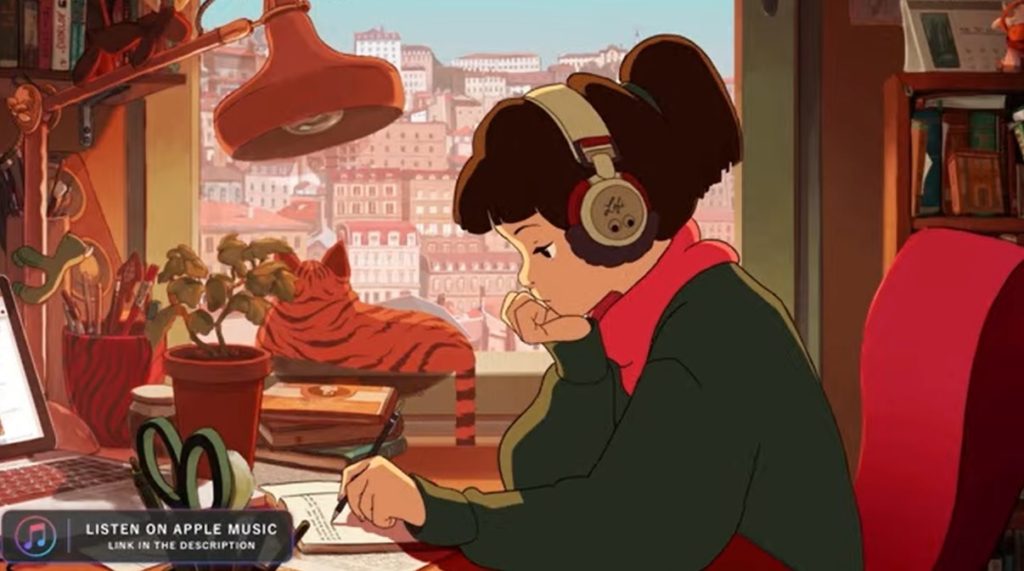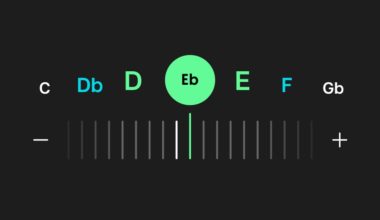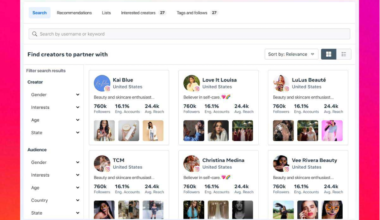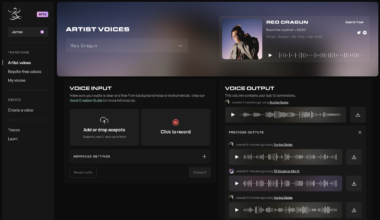
This article will explain what lo-fi music is, what it means, and why the genre is so well-liked.
What is Lo-Fi music?
Lo-Fi music is a kind of music that is frequently described as having minimal instruments and a gritty, grainy sonic quality. It’s well-liked for learning and concentration online because of its relaxing cadence and straightforward drum beats. Unpolished music with a “low fidelity” sound is referred to as lo-fi.
In this article, you will learn:
- What is Lo-Fi Music
- What Does Lo-Fi Mean In Music
- Why Is Lo-Fi Music So Popular
- Who Invented Lo-Fi Music
- Why Is Lo-Fi Music Relaxing
- Who Is A Popular Lo-Fi Music Artist
- How Do You Make Lo-Fi Music
What is Lo-Fi music?
Even when it contains human voices, which are typically taken from archival radio or television broadcasts, the majority of lo-fi music is instrumental. It has gradually become more well-known as a unique musical style that is distinct from contemporary music.
Low fidelity typically refers to poor audio quality, monotonous, plodding recordings that occasionally have a hiss. Not terrible in the traditional sense. Instead, its sonic textures are intentional. It is a style of music designed to have repetition organized in a distinctive way.
The underground is seeing the emergence of the lo-fi music genre. It creates a wonderful blend of calming background beats for studying, working, reading, and other tasks by fusing electronic music, downtempo music, chillwave, and indie hip-hop elements.
Drum loops or even classical music variants are frequently used as sample selections in lo-fi songs. Lo-fi music is what we refer to as chill study music because of its meditative quality, which makes it the perfect study music for improving concentration. The following list of salient qualities best describes the lo-fi sound:
Drum Loops
In both hip-hop and lo-fi, drum loops are a common element. Electronically created drum samples and live recordings are both employed in lo-fi music. Most of the time, beatmakers choose live parts because they’re simpler to edit in a digital audio workstation (DAW). The average lo-fi beat is between 70 and 90 beats per minute (BPM).
Jazz Chords
Jazz chord progressions are mellow and thoughtful, which makes them a crucial part of lo-fi sounds. Rhythm instruments (bass, drums) and piano are frequently used by lo-fi musicians in their songs, however they occasionally use horns or guitar as well.
-
Product on saleThe Dark Passenger Lo-Fi Acoustic Guitar Loop PackOriginal price was: $34.99.$4.95Current price is: $4.95.
Samples
Although lo-fi music is primarily instrumental, many of the tracks contain samples and other effects to improve the quality of the sound. Vocal samples are frequently used, and many use anime as an inspiration to highlight the similarity between the two media. Another popular way to communicate warmth and nostalgia for analog recordings is through vinyl albums.
What does Lo-Fi mean in music?
Lo-fi music is primarily utilized as background music today for almost any setting, including a business, a relaxing setting, or merely to fill stillness. To get this specific impression, musicians that make lo-fi music purposefully and consciously harm or degrade the tape saturation.
Consider the distinction between mainstream, hi-fi music and popular music. This type of music is carefully mastered and combined to produce high-caliber sound effects. In contrast to hi-fi, lo-fi aims to sound unpolished. Hip-hop tracks from the 1990s are frequently used as an influence for contemporary lo-fi music in order to create something fresh and unique.
Why is Lo-Fi music so popular?
Because of its calming beats, lo-fi music has become increasingly popular. People are drawn to this kind of music for a variety of reasons, including the desire to hear music that expresses their feelings, lifestyles, and current experiences. In a very healthy way, this music helps listeners release stress.
Looking at lo-fi through the perspective of nostalgia makes it simple to understand why it’s so popular. The utilization of nostalgic motifs in lo-fi music is becoming more widespread. The ideal Lo-Fi aids in reviving nostalgia for bygone eras. There’s no denying that nostalgia contributes to the appeal of Lo-Fi music.
Who invented Lo-Fi music?
Two people are nearly always considered as the originators or developers of lo-fi hip-hop: American rapper and producer J Dilla and Japanese DJ and producer Nujabes. They combined elements of jazz, hip-hop, and electronic music to produce a sound that was all their own.
Modern lo-fi music was inspired by the lo-fi sounds that YouTube live stream channels started to broadcast in 2013. Musicians with lo-fi preferences made playlists on YouTube and other streaming services, drawing inspiration from J Dilla and the father of chill hop, Nujabes.
Online Radio Station, Lo-Fi Girl, is a YouTube channel that has streamed Lo-Fi music 24/7 since 2015. The channel has nearly 11 million subscribers and had broadcast for approximately 20,000 hours.
Why is Lo-Fi music relaxing?
Because of its complexity, flaws, and benefits to listeners, lo-fi music seems to work almost magically. Drum loops that repeat frequently make up lo-fi music and can replace background noise with feelings of familiarity or nostalgia. Concentration is improved and brain activity is increased.
Slow music affects moods through releasing serotonin, the neurotransmitter known as the “Happy Hormone.” Lo-fi music not only elevates moods but also lowers stress chemicals like cortisol. Blood pressure and irregular heartbeats are both decreased along with blood levels of stress chemicals.
Lo-Fi music is frequently used by students all around the world to study, exercise, and focus. By design, the technical flaws in these sound recordings can stimulate the brain and help pupils focus on their assignments and assessments.
Who is a popular Lo-Fi music artist?
Lo-Fi Relaxer composes a series of lo-fi records that have amassed a strong following. The incomparable hit Lo-Fi Sleep for Babies has been streamed many times and is proven to help newborn babies sleep better.
How do you make Lo-Fi music?
Making lo-fi music is rather simple, even though it does involve knowledge of jazz theory. It is sample-based, which explains why. On the guitar or piano, you don’t actually need to know how to play complex chords because you can just sample them from one of the top platforms to buy sample packs. Currently, lo-fi producers combine samples to create music that has an old car stereo sound.
Anyone with access to some samples and a free DAW can create lo-fi beats quite easily. Let’s examine some of the foundational components of lo-fi music.
Using samples
You must first become familiar with sampling in your DAW to get started. Start out simply by dropping your samples into the timeline of your DAW or by using a sampling plugin to cut them based on their transients. For this task, quality samples are crucial.
Getting Lo-Fi drum loops or one-shots
Hip Hop serves as the foundation for Lo-fi music, which is mostly influenced by the 1990s and early 2000s hip-hop drum production style. Although the hip-hop genre is characterized by thuddy kicks, snappy snares, and hissing hi-hats, you don’t have to stick to those sounds.
By employing recordings of bottles, pots, and pans, lo-fi music can encompass nearly any unusual percussion you can think of. Lo-fi is inherently suited to recorded samples of live percussion, unlike subgenres like lo-fi trap, which frequently rely on electronically created samples.
You can procure some of the best lo-fi drums on some of these platforms.
Beautiful Lo-Fi chords
Most lo-fi chord progressions are merely streamlined jazz chord progressions. Lo-fi producers frequently incorporate more intricate 7th and 9th voicings into their tunes along with jazzy chord progressions like the two-five-one. Even if you are not a musician, knowing a bit about jazz theory will be helpful when looking for jazzy samples.
Lo-Fi instrumentation
Write lo-fi music like jazz musicians. Despite the fact that loops predominate in lo-fi music, jazz and lo-fi are remarkably similar. So you could wish to familiarize yourself with jazz instruments. You should always include drums, double bass, and piano in your lo-fi arrangements because these three instruments are the most often used rhythm section in jazz.
What you learned about Lo-Fi music?
In lo-fi (low-fidelity) music, aspects that are typically considered to be flaws in recordings can sometimes be heard as part of an intentional creative goal. Lo-Fi music frequently has minimal instruments and a grainy, grittier sonic quality.
Its easygoing cadence and straightforward percussion beats make it a favorite for studying and concentration online. Music that sounds “poor fidelity” or unpolished is referred to as lo-fi.
I hope that our information about the Lo-Fi music genre was useful to you and that we were able to clarify what Lo-Fi music is.






